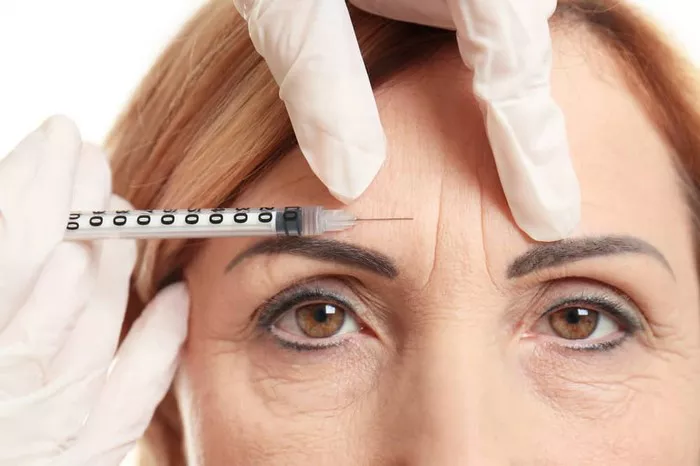Botox injections have become a popular cosmetic treatment for reducing the appearance of wrinkles and fine lines. While the procedure itself is minimally invasive and generally well-tolerated, it’s common for patients to experience some swelling at the injection sites afterward. If you’ve recently undergone a Botox treatment or are considering it, it’s important to understand how long swelling may last and what you can do to manage it. In this article, we will explore the duration of Botox swelling and provide helpful tips for minimizing discomfort during the recovery process.
Understanding Botox Injections and Swelling
Botox, or botulinum toxin, is a neurotoxic protein that is used in small, diluted amounts for cosmetic purposes. It works by temporarily paralyzing the muscles responsible for facial expressions, thereby reducing the appearance of wrinkles and lines.
During a Botox treatment, a healthcare professional injects the solution into specific areas of the face using a fine needle. While the procedure is generally well-tolerated, it can cause temporary swelling and redness at the injection sites. This swelling is a natural response to the injection and typically resolves on its own over time.
Duration of Botox Swelling
The duration of Botox swelling can vary from person to person. In most cases, the swelling is mild and short-lived. It typically begins immediately after the injections and peaks within the first 24 to 48 hours. After this initial period, the swelling gradually subsides over the course of a few days to a week.
In some cases, individuals may experience more significant swelling or bruising at the injection sites. This can depend on factors such as the sensitivity of the skin, the skill of the injector, and individual healing characteristics. However, it’s important to note that severe swelling or persistent swelling beyond a week is uncommon and should be discussed with your healthcare provider.
Managing Botox Swelling
While Botox swelling is a temporary side effect of the treatment, there are several measures you can take to manage it and minimize any discomfort:
Apply Cold Compresses
Immediately after your Botox injections, applying a cold compress or ice pack wrapped in a thin cloth to the treated areas can help reduce swelling. Be sure to avoid direct contact between the ice pack and your skin to prevent any potential damage.
Avoid Touching or Rubbing the Treated Areas
It’s important to refrain from touching, rubbing, or massaging the injected areas after Botox. This can help prevent the spread of the toxin to unintended areas and minimize the risk of additional swelling or complications.
Keep Your Head Elevated
Sleeping with your head slightly elevated on pillows can help reduce swelling. This elevation promotes better blood circulation and lymphatic drainage, which aids in the reduction of swelling.
Avoid Intense Physical Activity
Engaging in intense physical activity or exercise immediately after Botox injections can increase blood flow to the face, potentially exacerbating swelling. It’s advisable to avoid strenuous activities for at least 24 to 48 hours following the treatment.
Stay Hydrated
Drinking plenty of water can help flush out toxins and reduce swelling. Proper hydration is essential for overall skin health and healing.
Follow Post-Treatment Instructions
Your healthcare provider will provide you with specific post-treatment instructions. It’s important to follow these instructions carefully to ensure the best possible results and minimize any potential complications. These instructions may include avoiding certain medications or supplements that can increase the risk of bruising or swelling.
Be Patient: Remember that Botox swelling is temporary and will gradually resolve on its own. It’s important to be patient and allow your body time to heal.
When to Seek Medical Attention
While mild swelling and redness are common after Botox injections, there are instances where you should seek medical attention. Contact your healthcare provider if:
The swelling is severe or persists beyond a week.
You experience intense pain or discomfort at the injection sites.
You notice signs of infection, such as increasing redness, warmth, or drainage.
You have any concerns or questions regarding your recovery.
Your healthcare provider can assess your condition, provide appropriate guidance, and address any potential complications.
Conclusion
Botox injections can cause temporary swelling at the injection sites, but the duration and intensity of the swelling vary from person to person. In most cases, the swelling is mild and resolves within a few days to a week. By following simple measures like applying cold compresses, keeping your head elevated, avoiding intense physical activity, and staying hydrated, you can manage and minimize Botox swelling. Remember to follow your healthcare provider’s post-treatment instructions and seek medical attention if you experience severe or persistent swelling, intense pain, signs of infection, or have any concerns. With proper care and patience, you can enjoy the rejuvenating effects of Botox with minimal discomfort during the recovery process.

